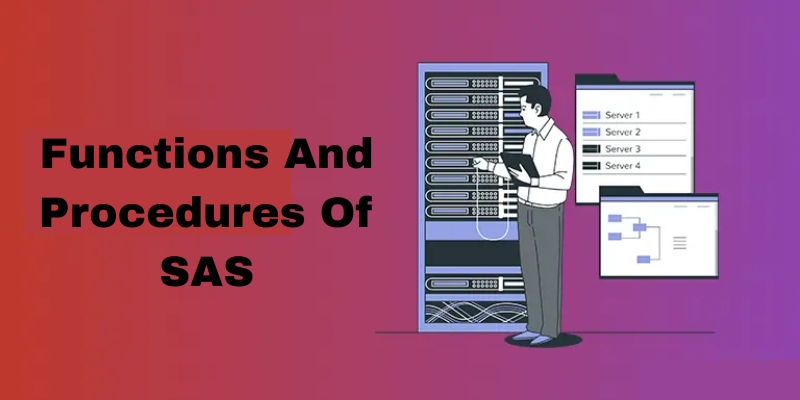SAS (Statistical Analysis System) is one of the most powerful tools used for data analysis, reporting, and predictive modelling. With its ability to manage vast amounts of data and produce detailed insights, SAS software is widely adopted in industries such as healthcare, banking, retail, and government. Enroll in SAS Training in Chennai to gain hands-on experience in data analysis, reporting, and predictive modelling from industry experts.
What are the Functions of SAS?
SAS functions are built-in operations that allow you to manipulate data values. They are used inside SAS DATA steps to process and transform data during program execution.
Key Features of SAS Functions:
- They work on variables or constants.
- Functions return a single value.
- Can be used for character, numeric, date, and mathematical operations.
Common Categories of SAS Functions:
- Character Functions
- UPCASE() – Converts text to uppercase.
- SUBSTR() – Extracts a part of a string.
- Numeric Functions
- SUM() – Adds numeric values.
- ROUND() – Rounds off numbers to a specific digit.
- Date and Time Functions
- TODAY() – Returns the current date.
- INTCK() – Calculates the interval between two dates.
- Mathematical Functions
- LOG(), SQRT(), EXP() – Used for complex computations.
Join our SQL Training in Chennai to gain expert database skills and receive dedicated placement guidance.
What Are Procedures in SAS?
SAS Procedures, also known as PROC steps, are predefined routines in SAS that perform analysis, reporting, and data management tasks. Each PROC statement is designed for a specific function, like printing data, summarising statistics, or running regression models.
Features of SAS Procedures:
- 🔹 PROC steps ha ndle large-scale tasks like sorting, summarising, and modelling.
- 🔹 They often work in combination with options and statements like BY, CLASS, and VAR.
Discover the essential skills of a Clinical SAS Programmer to enhance your data analysis capabilities and boost your career in clinical research.
Commonly Used SAS Procedures:
- PROC PRINT
- Displays the contents of a dataset.
- Displays the contents of a dataset.
- PROC SORT
- Arranges data in ascending or descending order.
- Arranges data in ascending or descending order.
- PROC MEANS
- Calculates summary statistics like mean, median, min, and max.
- Calculates summary statistics like mean, median, min, and max.
- PROC FREQ
- Generates frequency tables for categorical variables.
- Generates frequency tables for categorical variables.
- PROC REG
- Performs regression analysis.
- Performs regression analysis.
- PROC SQL
- Executes SQL queries on SAS datasets.
To learn advanced-level SAS, join Clinical SAS Training in Chennai to gain in-depth knowledge of clinical data analysis and boost your career in the pharmaceutical and healthcare industries.
Difference Between Functions and Procedures
Understanding the difference between SAS functions and SAS procedures is crucial for efficient data manipulation and analysis. In SAS programming, functions are used within the DATA step to operate on individual values, allowing for data transformation at a granular level. For example, functions like SUM() or UPCASE() return a single value after processing a specific variable or expression.
On the other hand, SAS procedures (also known as PROC steps) are used to perform tasks on entire datasets. These are written in the PROC step and can generate detailed reports, statistics, and visual outputs. Common examples of procedures include PROC MEANS for summarising data and PROC PRINT for displaying dataset contents.
Join the Training Institute in Chennai to develop your skills through expert-led training and gain valuable placement support for career growth.
Why Learn SAS Functions and Procedures?
Whether you’re analysing business metrics or working on clinical trial data, SAS provides a structured way to handle data efficiently.
Advantages include:
- Faster data processing
- Improved data accuracy
- Automated report generation
- Widely recognised across industries.
In the SAS environment, both functions and procedures are essential tools that simplify complex data tasks. While functions allow for precise data manipulation within DATA steps, procedures offer a broader capability to analyse, summarise, and visualise data. Mastering these tools will not only make your programming more efficient but also prepare you for real-world applications in data analysis.
Also check: Future Scope of SAS in the Healthcare Industry
